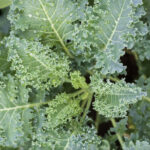 For such a short month, February is filled with celebrations. It contains weather forecasts by rodents, presidential birthdays and, my favorite, a holiday devoted to love.
For such a short month, February is filled with celebrations. It contains weather forecasts by rodents, presidential birthdays and, my favorite, a holiday devoted to love.
It is wonderful that an entire day is dedicated to appreciating our significant others. Fine dining seems to be a great way to spend time with our loved ones, and the best way to end such a happy time is with a glass of dessert wine.
The three best in the world are all the color of gold in the glass and exist solely due to a mold known as the “noble rot.” The scientific term is Botrytis cinerea. This fungus occurs in only a few wine regions in Europe, but concentrates the flavor and sweetness of the grapes into a heavenly elixir. These are not inexpensive due to the labor-intensive hand harvesting, which can go as far as cutting individual grapes from the bunches.
The French wine comes from the Graves area of Bordeaux in a small group of villages known as Sauternes. The main grapes are semillon and sauvignon blanc. This is a sweet and wonderful quaff with a creamy taste and a distinctive nuttiness. The finish is clean and long, not at all cloying, which is a surprising feature for such a sweet wine. Try it alone or with dessert.
Beerenauslese is the German term for that country’s sweeter noble rotted wine. Here, riesling is the main player with intensity and balance rolled into one. The wine is rich with caramel and honey, but is never overpowering due to the high acidity that the grapes contribute. This is a rare treat that should be sought and appreciated—a truly unique treasure.
Hungary produces the legendary Tokay aszú. Older than the other wines mentioned here, aszú comes in various levels of sweetness ranging from three to six “puttonyos.” The higher the number, the higher the sugar and, usually, the higher the price. The main grape here is furmint. Once the fruit has developed the fungus, it is called aszú. The harvested berries are kneaded into a pulp to which regular Tokay wine is added. Depending on the amount of these noble aszú, the wine takes on its sweetness and richness.
This is a truly unique quaff. It has sparked its own lore across the world, as it was cherished for centuries by the crowned heads of Europe. French monarch Louis XV called it the “ king of wines and the wine of kings.” Nowadays, it is available to everyone. So, you and I can drink a wine that was prized by the tsars of Russia and the royalty of France.
As you sit across the table from your significant other, I hope you can enjoy one of these wines, which are as unique as the two of you. Just don’t mention the fungus.
Keep sipping, Steve





